Further logistics and workflows
- You will need to display information on what packages of backlist books you are offering, and where to sign up for them.
- A sign up or simple enquiry form could be on your website, or on that of a 3rd party, and/or it may point potential members to the subscription pages on Jisc and Lyrasis' websites.
- If you are handling your own sign ups, or for those not handling by another party, you will need to capture a few details but this can be as straightforward as a contact form with a few mandatory fields.
- Your backlist content delivery platform of choice will need to provide appropriate metadata and metrics as well as gated, time-bound access to the backlist package for members. We have suggestions for platform providers in the section on 'Organisational Partnerships'.
- We recommend using the lightweight Shared E-Resource Understanding (SERU) to govern library access to the backlist.
- Transparency is crucial on where library member investment has been spent (i.e. you need to display information on what books have been published by members, and who those members are)
Making your offer public and transparent
You will need to make some updates to your Press website in order to promote and implement Opening the Future effectively; libraries need clear information about what is on offer, and what the funds raised are for. Even if you are using a 3rd party partner to deliver some or all of the programme, you will need at least to display the following information as a minimum on your and/or their website or portal:
- A list of your backlist offering(s) i.e. what books are included in the deal, why they are important in their subject, what topics are covered
- We recommend also supplying a simple downloadable list of the titles with some extra metadata like co-authors, ISBN etc
- The price bands for different institutions, and for the duration of their subscription (noting any annual increases)
- A link to the sign up process you use - make it easy for libraries to engage with as few clicks as possible
- General information about the model, why you are implementing it, how it works, and the key benefits to the library and to you as the publisher, as well as some information about your press. You will have your own reasons for implementation and what benefits you feel your particular offering has to libraries; the information on how it works can be adapted from this toolkit.
- FAQs of useful information for libraries and authors; we have reproduced our FAQ page later in this toolkit for you to draw from.
- A section or page listing and thanking your library supporters: an important pillar of community-funded programmes like OtF is transparency not only on prices but on who else is involved too. Note also that some libraries are more likely to sign up when they can see others in their network are also involved.
- An updateable section or page collating the list of titles you have published so far using Opening the Future and titles that are earmarked for Opening the Future but are still forthcoming. This should contain links to access the published OA books, be that on OAPEN or elsewhere. This is another crucial pillar of community-funded programmes: as trusted stewards of their institution's money, library members need to know how/where that investment is being spent. Information on what has been published through their investment may also be critical for libraries building internal cases to justify renewing their membership. Two-way trust is one of the key pillars of the OtF model, so any ways in which you can be transparent will help to sustain this trust.
Expand the box below to see example web pages of how the Copim project displayed this information for Central European University Press's OtF programme.
Example web pages displaying crucial OtF information for CEU Press
How do library members join?
You need to make it as simple as possible for libraries to engage with the model and to become members. The Copim project created a free open source sign up tool that anyone can implement with a little bit of technical knowledge but in fact your sign up interface could be as simple as an email address or a contact form on your website. As long as you display the information recommended in the section above and have a quick way for libraries to pledge, enquire or join then you can launch the model.
We strongly recommend you also have an agreement with Jisc in the UK, and Lyrasis in North America, to get them to list your offer on their websites/catalogues. As well as these being trusted library network partners, they offer you more exposure and they can handle some billing for you too. Details on how to get an agreement with them can be found in the previous section of this toolkit, under the section Organisational Partnerships.
If you want to explore using the free open source tool Copim designed for displaying the model and managing sign ups then you can find all the details and code on Github 👉 https://github.com/openlibhums/otf-signup
Expand the box for more in-depth technical detail on the sign up system developed by Copim.
The OtF signup system technical details
Features of this platform include:
- Content Management System [CMS], allowing editing of webpages to display packages and other info
- Ability to collect sign up data
- Access control notification system
- News page functionality
- Per user and per role access control
Running the sign up infrastructure requires an independent web host capable of serving wsgi applications in python. The overheads of running this system locally should be matched to the Press’s in-house technical capacity. As always, the cost of free software must be measured in the time that it takes for an in-house individual to maintain a site vs. the cost of externalising/outsourcing such provision. Additionally, this will not be supported after April 2026. Therefore, unless you are confident that you have the technological capability to implement and sustain this, we do not recommend that you use it.
Sign-up Workflow
The workflow for Opening the Future can be as simple or as complex as you want it to be but it does involve multiple actors involved at different times, so coordination between different parties requires a little care and some technological interfaces.
The workflow has to handle the following core activities:
- Library sign up
- Payment processing (this may be your normal financial process, for example, you may already invoice and manage subscriptions to journals you publish and can adapt this process very slightly for OtF members)
- Access control management (if you use Project MUSE they will handle this for you, but you may have your own platform or a relationship with another provider who will need to be able to control access to a package of your backlist books)
- Library cancellation (a library may need to cancel their membership before their 3 years subscription has expired. In practice, this never happened once during the Copim project implementation of the model)
Actors and Actions
| Actors | Action | Notes |
| Library | Completes form on website or sends email | Alerts the appropriate contact at the Press and intermediaries |
| Jisc, Lyrasis, Press | Depending on the region (or on your partnerships), Jisc, Lyrasis or the Press itself will process the signup. In the case of Jisc or Lyrasis, the Library may complete a signup on their system instead of contacting the press directly. | If a library signs up through Lyrasis or Jisc’s independent catalogue platform, it may be necessary to copy the details into the Press’s own CRM system, subs system, or however they choose to track and manage members internally. |
| Jisc, Lyrasis, Press, Project MUSE, Other platforms | The Press or intermediary (Jisc, Lyrasis) informs the platform provider (e.g. Project MUSE) that access should be granted to the signup institution | By default we recommend enabling perpetual access just before payment is received and retracting it if not received within 3 months. The beauty of making access perpetual from the start is that after 3 years' membership, no further admin is required on the library's backlist access. |
| Jisc, Lyrasis, Press, 3rd party | Issue invoice to Library. | |
| Press | Send welcome email to Library. | The welcome email is an opportunity to thank the library and should include: Details of access to subscription packages and what metadata records are available (e.g. MARC, KBART) A proposed comms announcement (see more info under Marketing and Outreach) |
| Library | Cancellation | If a library cancels within the three year window, access should be revoked. |
Sign-up Infrastructure
In essence, the sign up process is just the delivery of various pieces of information from the library to you, the publisher. These are:
- The identity and location of the library.
- The library's IP range for your content delivery provider to switch on their access to the backlist (or whatever other technical access control you/your platform uses e.g. OpenAthens ID)
- Which package(s) they would like to sign up to
- A contact for you/your agent to invoice and to discuss various payment details such as if they will pay all three years upfront or in annual instalments.
As noted before, Jisc and Lyrasis can provide some technical sign-up functionality on their subscription manager platforms which you can link to on your site. But if you are managing your own subscriptions, and for subscriptions outside of the UK and US, you will need your own sign up interface (a sign up tool, a contact form, an email address, whatever). You may already have internal processes and a CMS and/or Customer Relationship Manager (CRM) that you can adapt to use on your Opening the Future programme in manage the back office smoothly. As noted, it can be as simple as a sign up form, which triggers a notification to you with the relevant information in order to process the sign up.

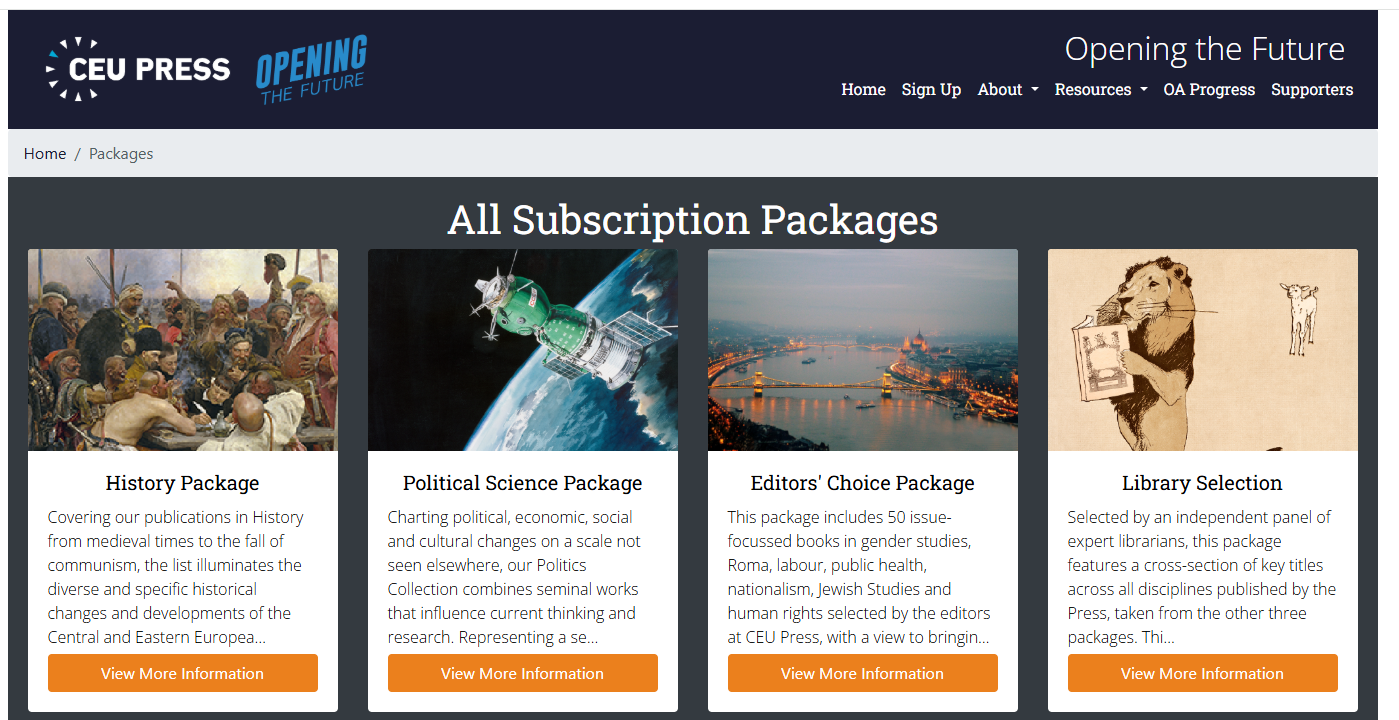
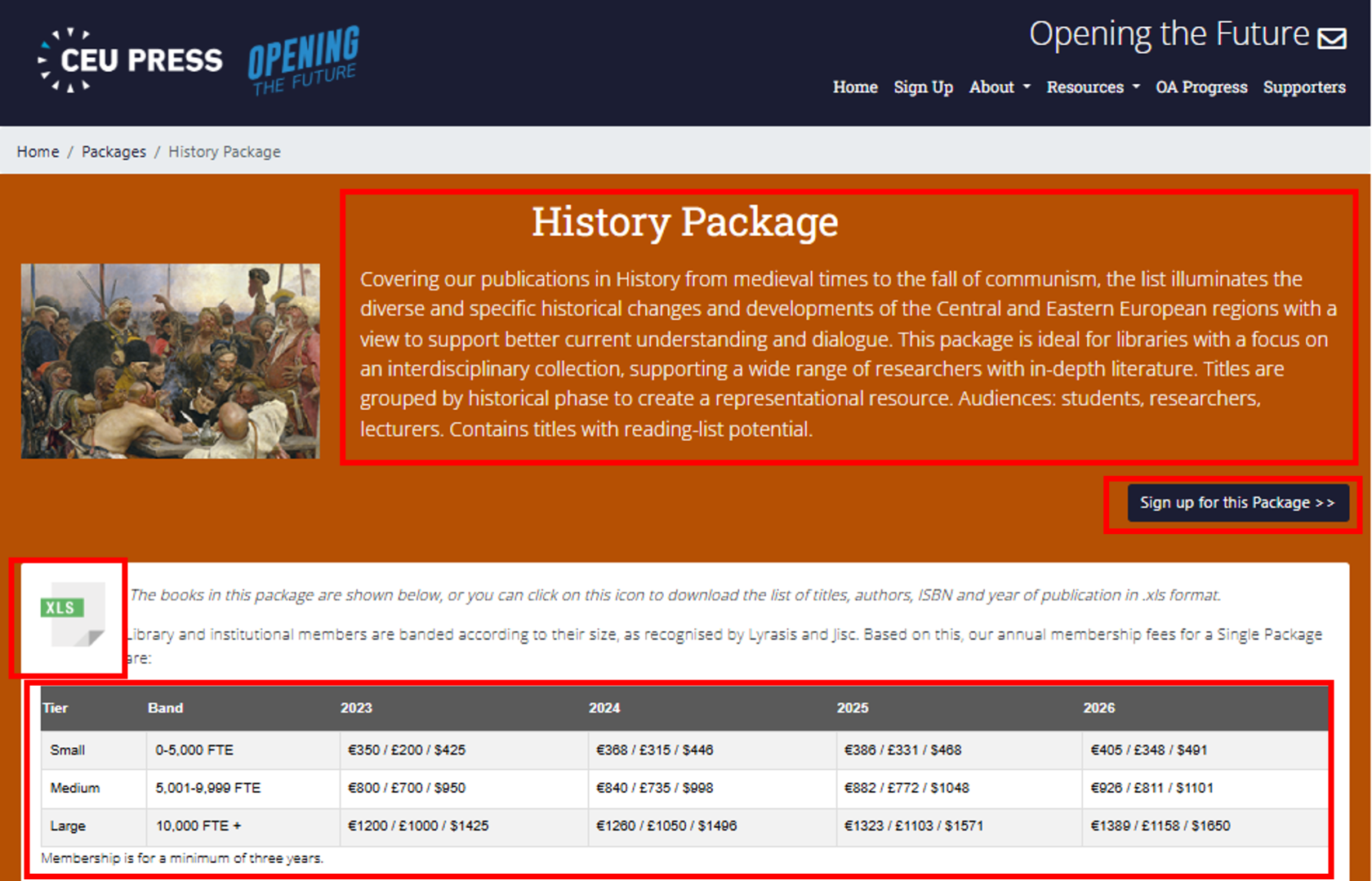

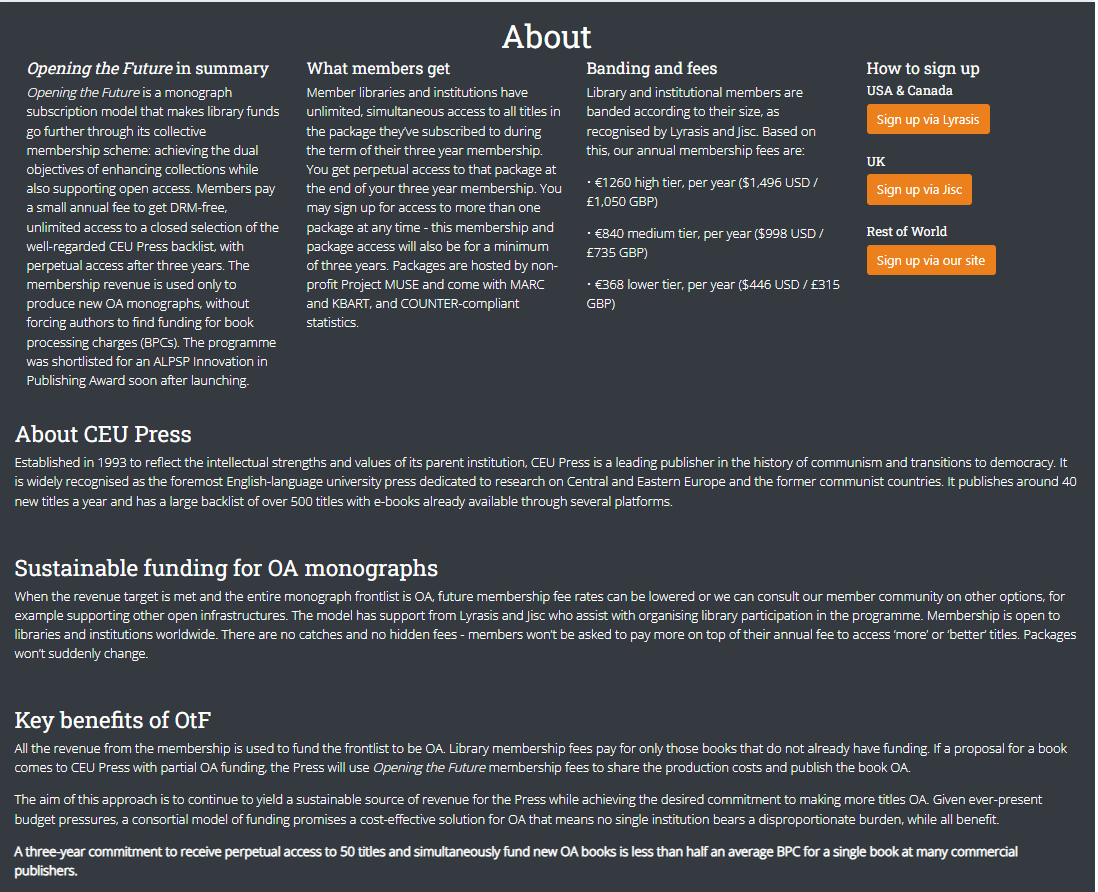
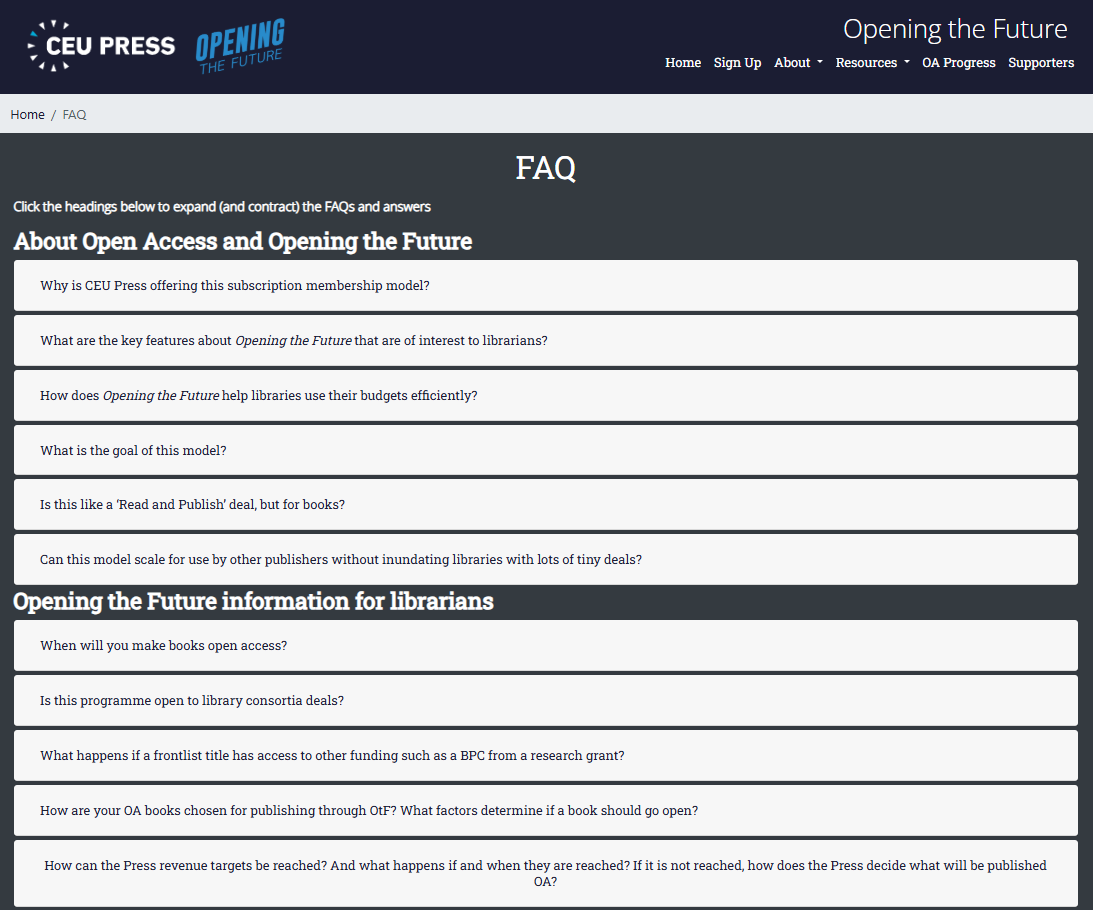
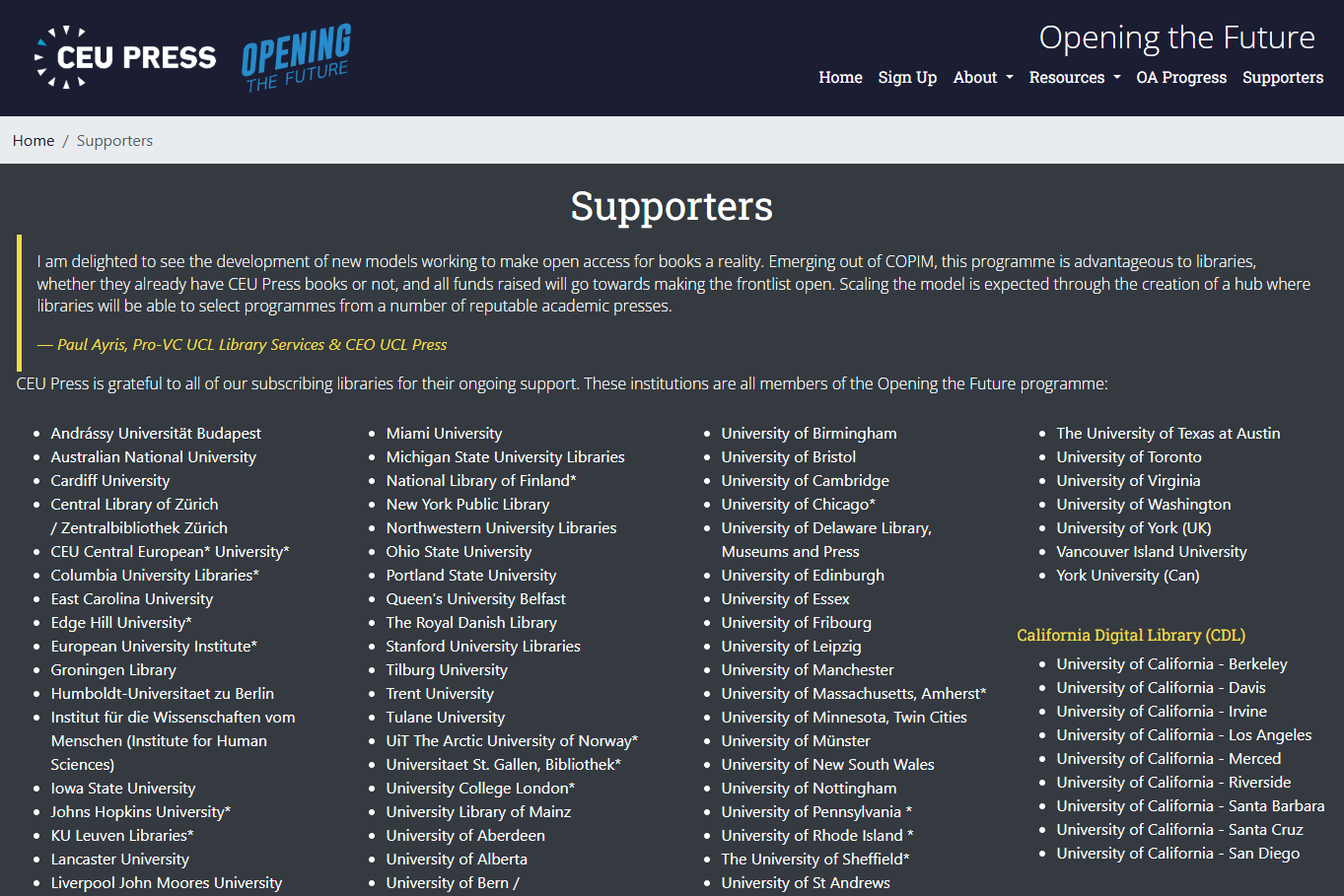
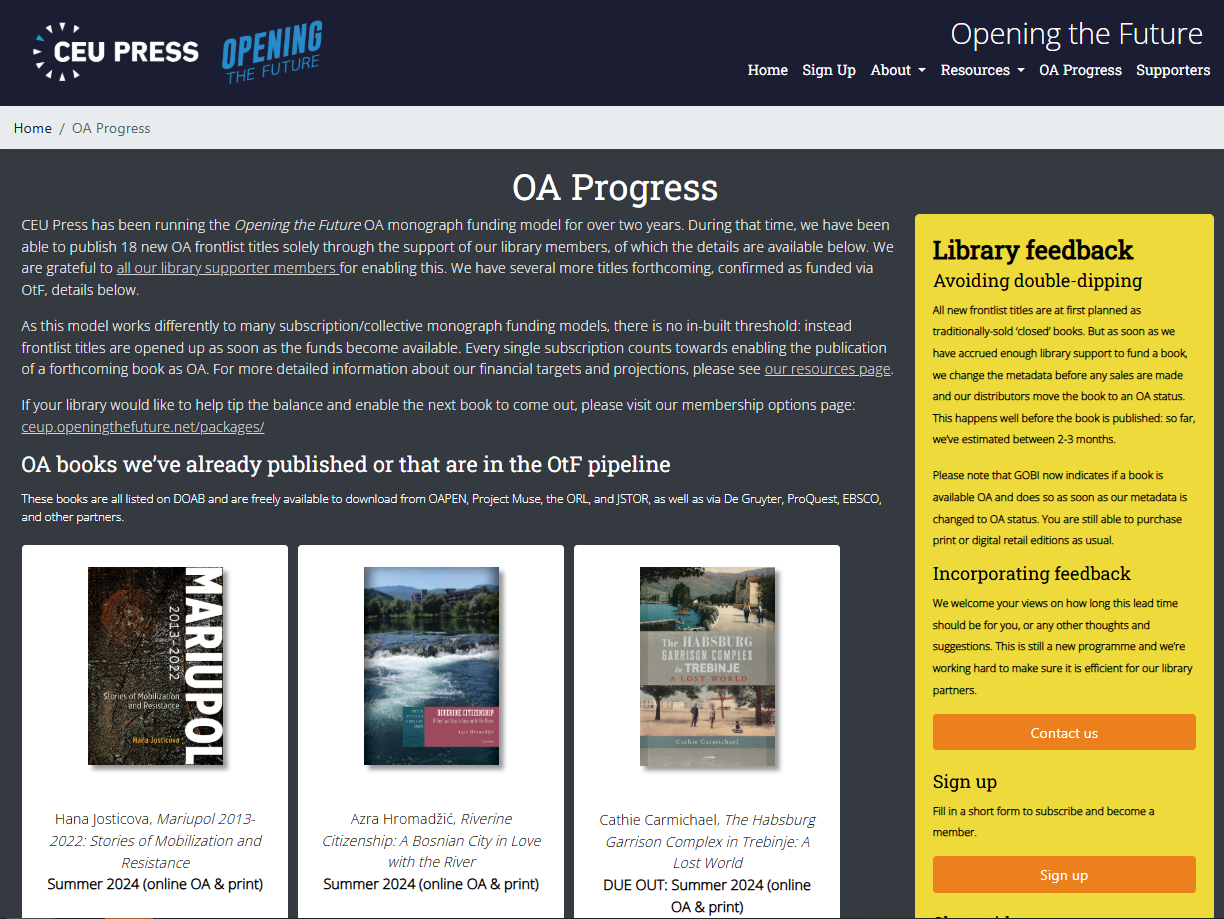
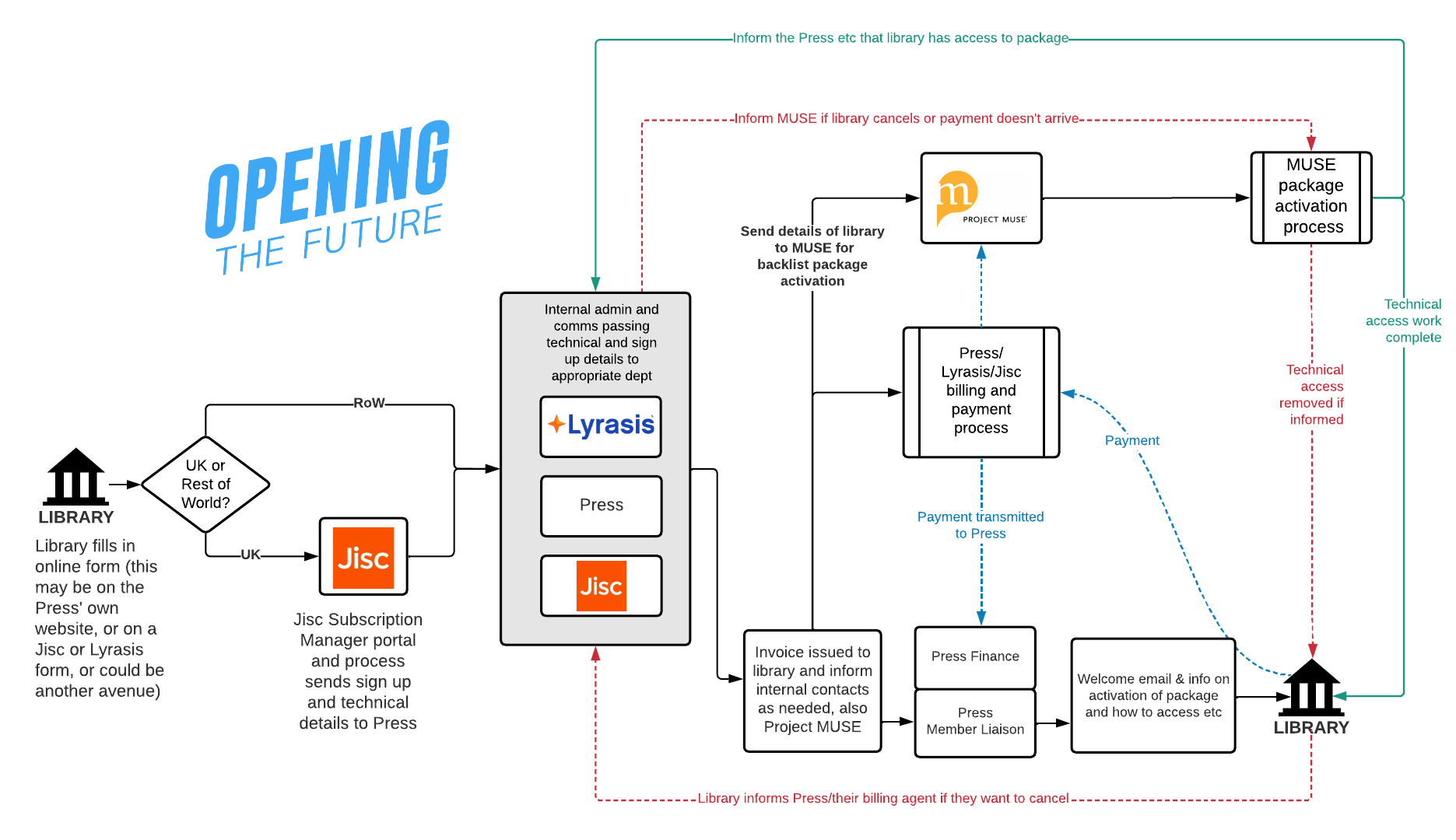
No Comments